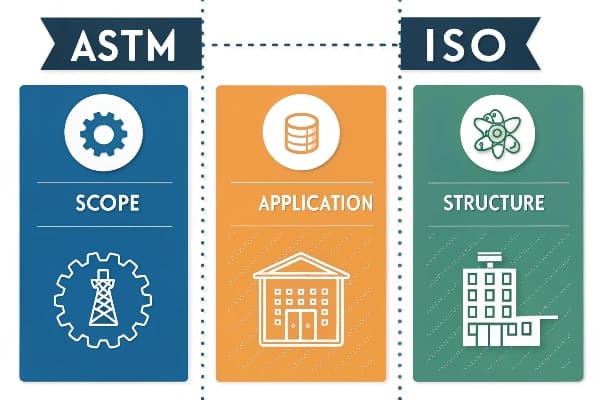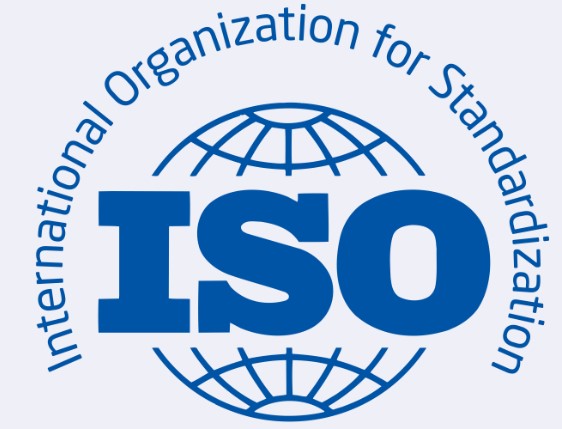When it comes to industry standards, two of the most recognized organizations are ASTM and ISO. Both have a significant impact on manufacturing, quality control, and product development, but they differ in their origins, scope, and application. Understanding these differences can help manufacturers choose the right standard for their needs, especially in industries like rubber manufacturing, where quality and performance are critical.
ASTM and ISO both set standards for materials, but they serve different purposes and markets.

While ASTM is primarily focused on the U.S. market, ISO standards1 are more widely adopted around the world, with the goal of creating a unified approach to product quality and safety.
What Is ASTM?
ASTM, or the American Society for Testing and Materials, is an international standards organization that develops voluntary consensus standards for a wide range of materials, products, systems, and services. Founded in the U.S., ASTM's standards are widely used in the Americas, though they are increasingly recognized internationally.
ASTM standards focus on ensuring that materials and products meet specific quality and performance benchmarks.
ASTM standards2 cover various aspects of material properties3, including mechanical strength, chemical resistance, and durability. For example, ASTM standards are often used for evaluating rubber compounds, ensuring that materials like silicone, EPDM, and neoprene rubber meet the requirements for various industrial applications.
Key Features of ASTM Standards
- Primarily used in the U.S. but increasingly accepted internationally.
- Voluntary standards: Manufacturers are encouraged but not required to comply.
- Industry-specific: Focus on detailed guidelines for testing, material properties, and performance.
What Is ISO?
ISO, or the International Organization for Standardization, is a global organization that creates and publishes international standards. Unlike ASTM, ISO has a broad scope and covers nearly all industries worldwide, from manufacturing to healthcare, and even environmental management. Its goal is to ensure that products and services are safe, reliable, and of good quality.
ISO standards are intended to ensure consistency and compatibility across industries and countries.

ISO standards1, such as ISO 9001 for quality management systems or ISO 14001 for environmental management, have broad global adoption and aim to create uniformity across international borders. This is particularly important for multinational corporations and companies that engage in international trade.
Key Features of ISO Standards
- Globally recognized, with a presence in over 160 countries.
- Mandatory compliance in some cases, especially for businesses in regulated industries.
- General focus on quality, safety, and compatibility across products and systems.
Key Differences Between ASTM and ISO Standards
While both ASTM and ISO standards1 focus on ensuring product quality and safety, they serve different needs in terms of scope, application, and international reach. Here’s a breakdown of the key differences:
1. Geographic Reach
- ASTM: Primarily used in the U.S., though it is increasingly adopted internationally.
- ISO: Recognized and adopted globally, with a focus on creating international standards.
2. Voluntary vs. Mandatory
- ASTM: ASTM standards2 are voluntary. Manufacturers are encouraged to adopt them but are not required to comply.
- ISO: While many ISO standards1 are voluntary, certain industries or countries may mandate their adoption, especially for safety, environmental, or regulatory reasons.
3. Scope
- ASTM: Focuses on material properties3, testing methods, and performance criteria in specific industries, particularly in manufacturing and construction.
- ISO: Covers a much broader range of industries and topics, including management systems, safety standards, environmental practices, and product performance.
4. Standard Creation Process
- ASTM: Developed through consensus from technical committees, often with direct industry participation, primarily from U.S.-based organizations.
- ISO: Created by international experts from member countries, focusing on global applicability and harmonization of standards.
5. Application
- ASTM: Primarily adopted for U.S.-based manufacturing, testing, and regulatory compliance.
- ISO: More broadly applicable for companies involved in international trade or those seeking uniformity across countries.
| Feature | ASTM | ISO |
|---|---|---|
| Geographic Reach | Primarily U.S., but increasingly international | Global, with over 160 member countries |
| Compliance | Voluntary (except for certain industries) | Often mandatory in regulated industries |
| Scope | Focus on material testing, properties, and performance | Broad range: product performance, safety, quality, and management |
| Standard Creation | Developed by U.S. industry experts | Developed by international experts |
| Application | Primarily for U.S. industries | Widely adopted for international trade |
Which Is Better for My Business?
The choice between ASTM and ISO standards1 depends on your business needs and the markets you serve. If your company primarily operates in the U.S., ASTM standards2 may be more relevant. However, if you do business globally or export products, ISO standards are likely to be more beneficial for ensuring international compliance and facilitating trade.
In many cases, companies follow both ASTM and ISO standards to ensure their products meet both local and international requirements.
Conclusion
Both ASTM and ISO play vital roles in the development of industry standards, but they cater to different needs. ASTM is focused on ensuring material performance and testing within the U.S. market, while ISO aims to create uniform standards across industries and countries. Understanding these differences can help businesses choose the appropriate standards for their products and ensure they meet regulatory requirements both locally and internationally.
-
Discover how ISO standards facilitate international trade and ensure product safety and quality across borders. ↩ ↩ ↩ ↩ ↩
-
Explore this link to understand the importance of ASTM standards in ensuring product quality and performance in various industries. ↩ ↩ ↩
-
Learn about the critical role of material properties in manufacturing and how they influence product performance and safety. ↩ ↩








